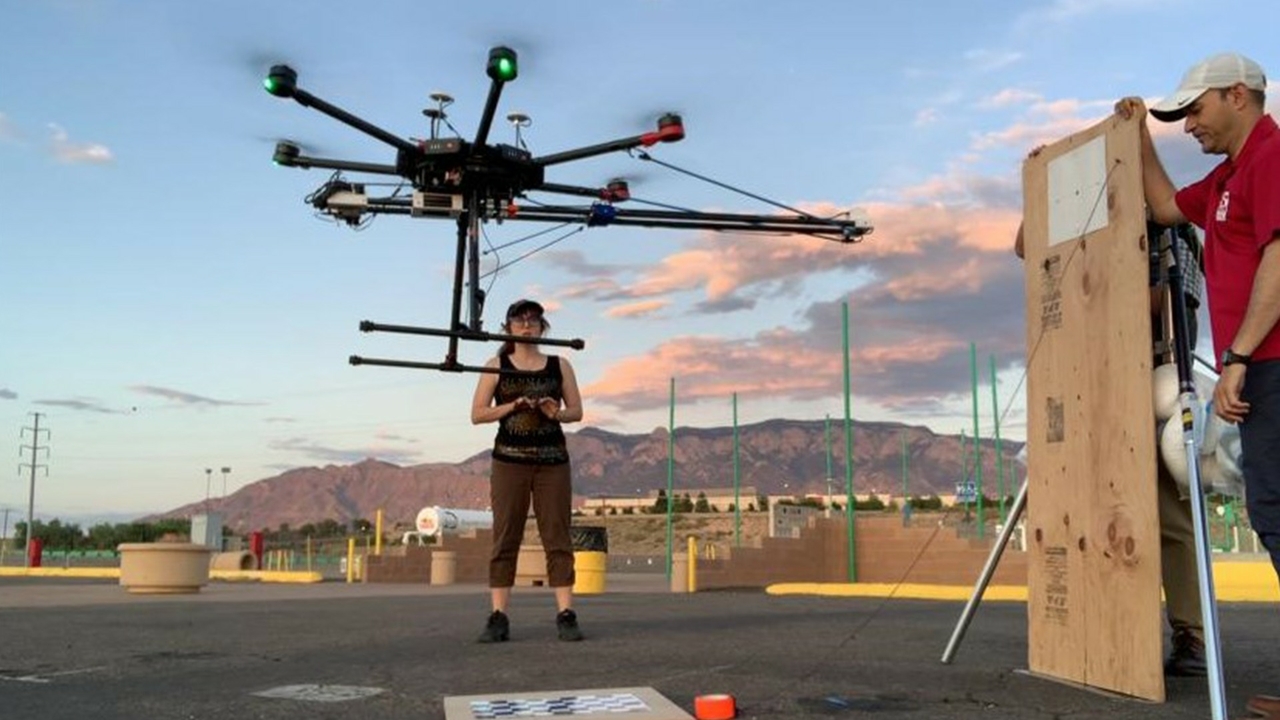Railroads transport huge amounts of freight and people every day across the continent and being on time is of paramount importance. There are approximately 100,000 railroad bridges in the United States, and more than half are over 100 years old, making each one increasingly risky every time a train rolls over.
These factors make bridge management and maintenance a top priority for the safety of freight rail, according to Fernando Moreu, assistant professor in the Department of Civil, Construction and Environmental Engineering at The University of New Mexico.
From wooden trestles in the countryside to concrete overpasses in the city, age, weather, and collisions take their toll on these bridges. Damaged infrastructure can mean derailed trains, huge losses of freight, and possible injuries or death for passengers, crews, and nearby motorists and pedestrians.
A video of a bridge in North Carolina is good for laughs and groans as the tops of large trucks get scraped off by a railroad overpass, scattering parts and pieces all over the road and vehicles around it. But it illustrates how often just a single overpass potentially sustains damage and puts rail transport at risk.
And time is money, as the saying goes. The $60 billion per year railroad industry moves approximately 40 tons of freight per person over rail track every year. Every time there is an impact or damage, trains stop as damage is repaired. Holdups cost the industry money.
Roya Nasimi is one of a few women in the male dominated field of Structural Engineering. She graduated with her master’s degree in the field in 2017 and is now working toward her doctoral degree. She is currently examining better ways to monitor railroad infrastructure, developing “reference free, non-contact dynamic displacement measurements” for bridge and infrastructure inspections in Moreu’s Smart Management of Infrastructure Laboratory (SMILab).
Moreu noted that her project is funded by the prestigious National Academy of Sciences in the Transportation Research Board Rail SAFETY IDEA program. Experts from the Canadian National Railways, Los Alamos National Laboratory, the Multi-Agent, Robotics, and Heterogeneous Systems Lab at UNM, and the Transportation Technology Center Inc. provide insights towards the impact of this project to railroad safety.
Railroad industry teams have typically examined infrastructure visually while climbing on it. Moreu and his team are working to develop and implement innovative smart-sensing technologies and strategies to ensure infrastructure safety with accurate and cost-effective technology, including drones and augmented reality.
For their research, Nasimi and the SMILab team are using a drone they have equipped with a variety of sensors that will collect data that can be used to access the structural condition of bridges. Nasimi stood in the lobby of the UNM Center for Advanced Research Computing where the SMILab is located, spread her arms wide and estimated, “The drone is about as big as me.”
(Watch the video of Nasimi and Moreu using the drone in a simulation of infrastructure inspection.)
“It’s a great feeling to see a drone that you equipped with a lot of sensors flies safe and collect data without any accident or issue. The initial flights and preparations are stressful because any mistakes can lead to unsuccessful outcomes, drone crashes, or human injuries, but after few flights you have more control on the situation,” she said.
After meeting with the Federal Railroad Administration and various experts in railroad bridge research, Nasimi developed embedded algorithms for flying and filming bridge displacements with the laser and camera. Later she designed a testbed at the SMILab. Working over the summer with two electrical engineering interns from the University of Puerto Rico and Ana G. Mendez University, she helped develop a system to collect reference-free displacements combining laser and computer vision algorithms. Senior research engineer Su Zhang from the Earth Data Analysis Center at UNM and a SMILab senior member assisted the outdoor implementation.
An outdoor test in Albuquerque that incorporated the system was successful and two journal papers are being submitted. Nasimi has presented the research this fall to the American Society of Civil Engineers Conference at New Mexico Tech University, and at the recent Shared Knowledge Conference at UNM.
The Moreu group has traveled to Colorado Springs to demonstrate their work on site at railroad bridges, align the drone with industry standards, and get feedback from industry experts. Moreu anticipates the technology will be used for real-time assessment in the field and safer infrastructure for the nation’s railroads.
Nasimi said she enjoys her infrastructure research and hopes to stay in academia after she receives her Ph.D.
“Whatever I do in future will definitely involve research,” she predicted, adding, “This project is a beautiful Ph.D. topic for me as this is an interdisciplinary research and broadens my skills. I’ve had to deal with various things that they were not related to my field and were out of my comfort zone. However, by overcoming those issues I improved my problem-solving skill and I am able to approach problems with creativity.”
In January the research team will be in Washington, D.C. at the 99thTransportation Research Board Annual Conference to report its accomplishments and implement recommendations going forward. They will present the various innovations to over 13,000 transportation professionals and to the program managers of the National Academy of Science, Engineering and Medicine. The TRB Rail Safety IDEA program is sponsored by the Federal Railway Administration (FRA) and provides funding for projects that promote innovative approaches to improve railroad safety or performance.
In the news
KRQE 13 – UNM researchers using drones to examine aging bridges


